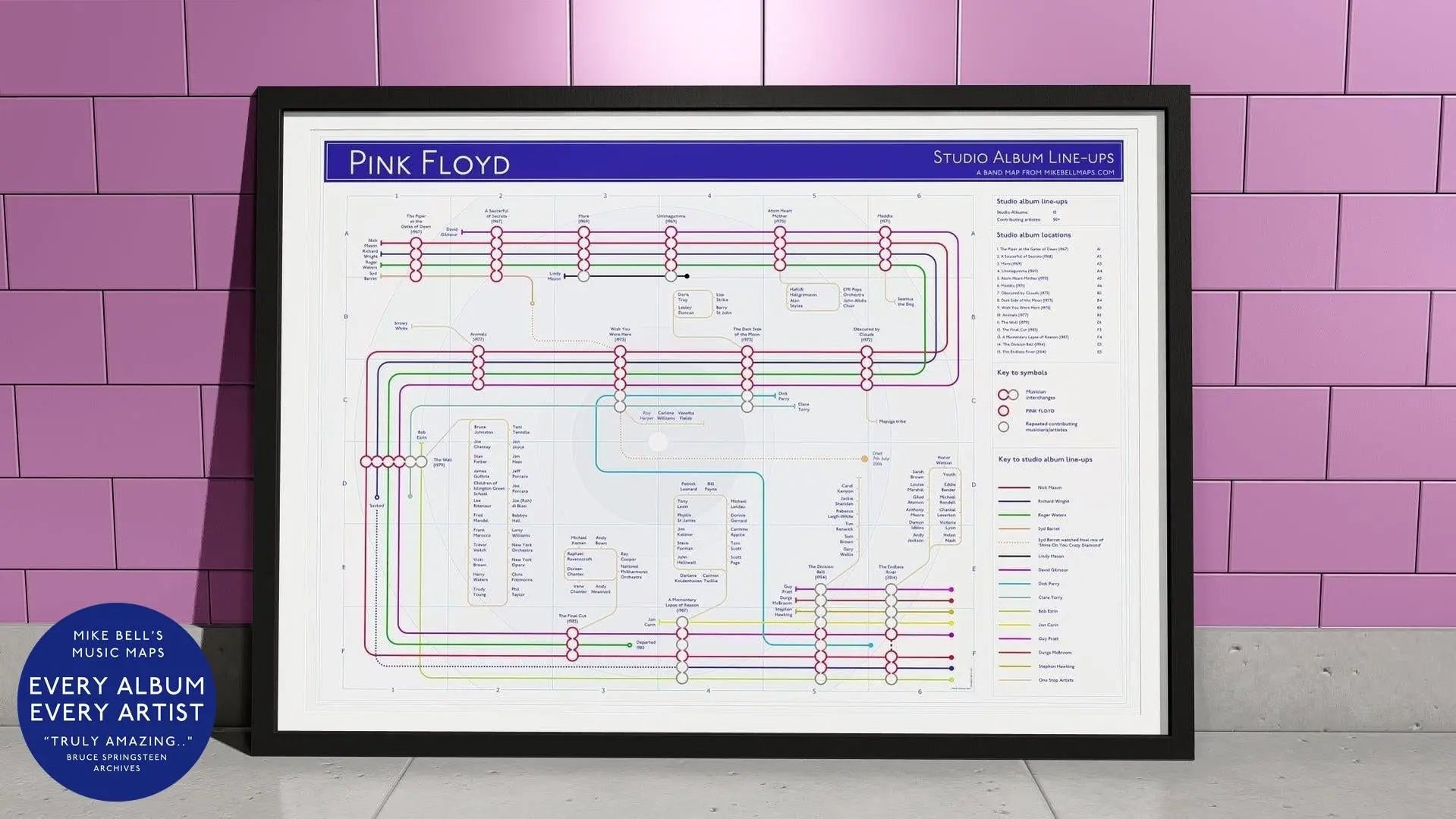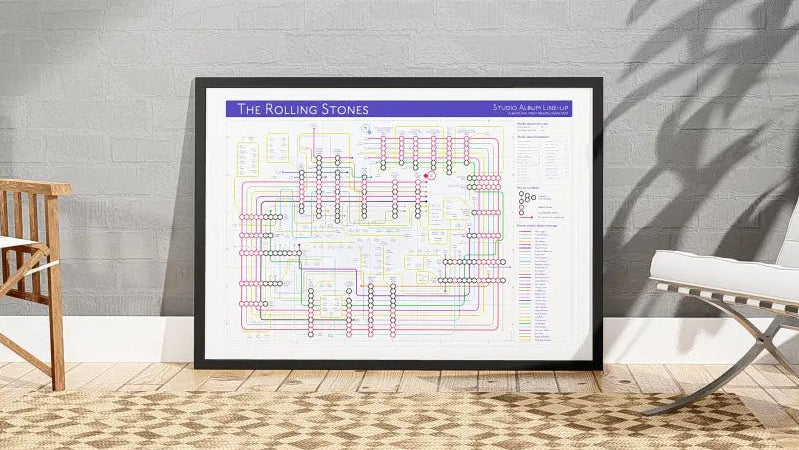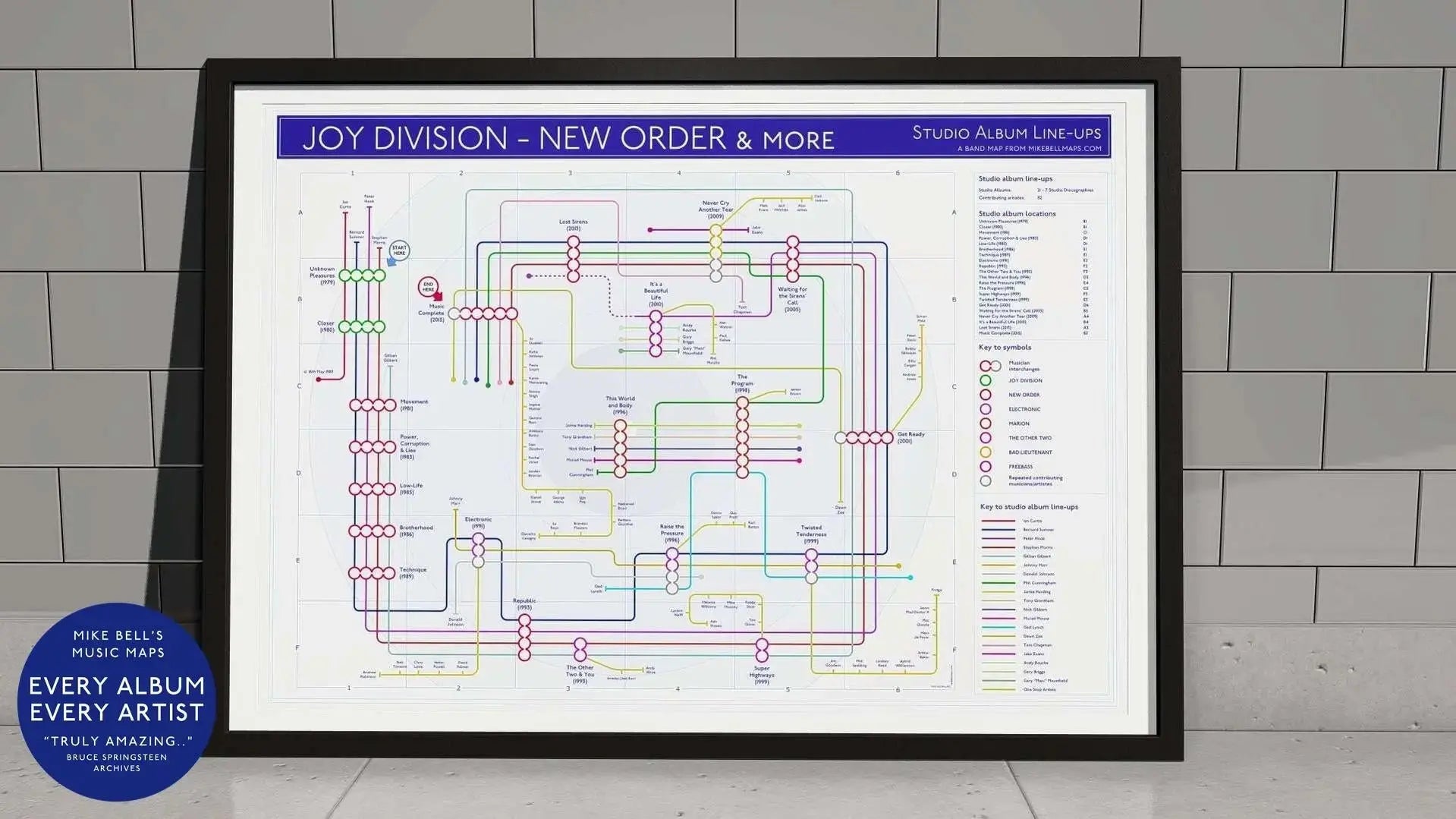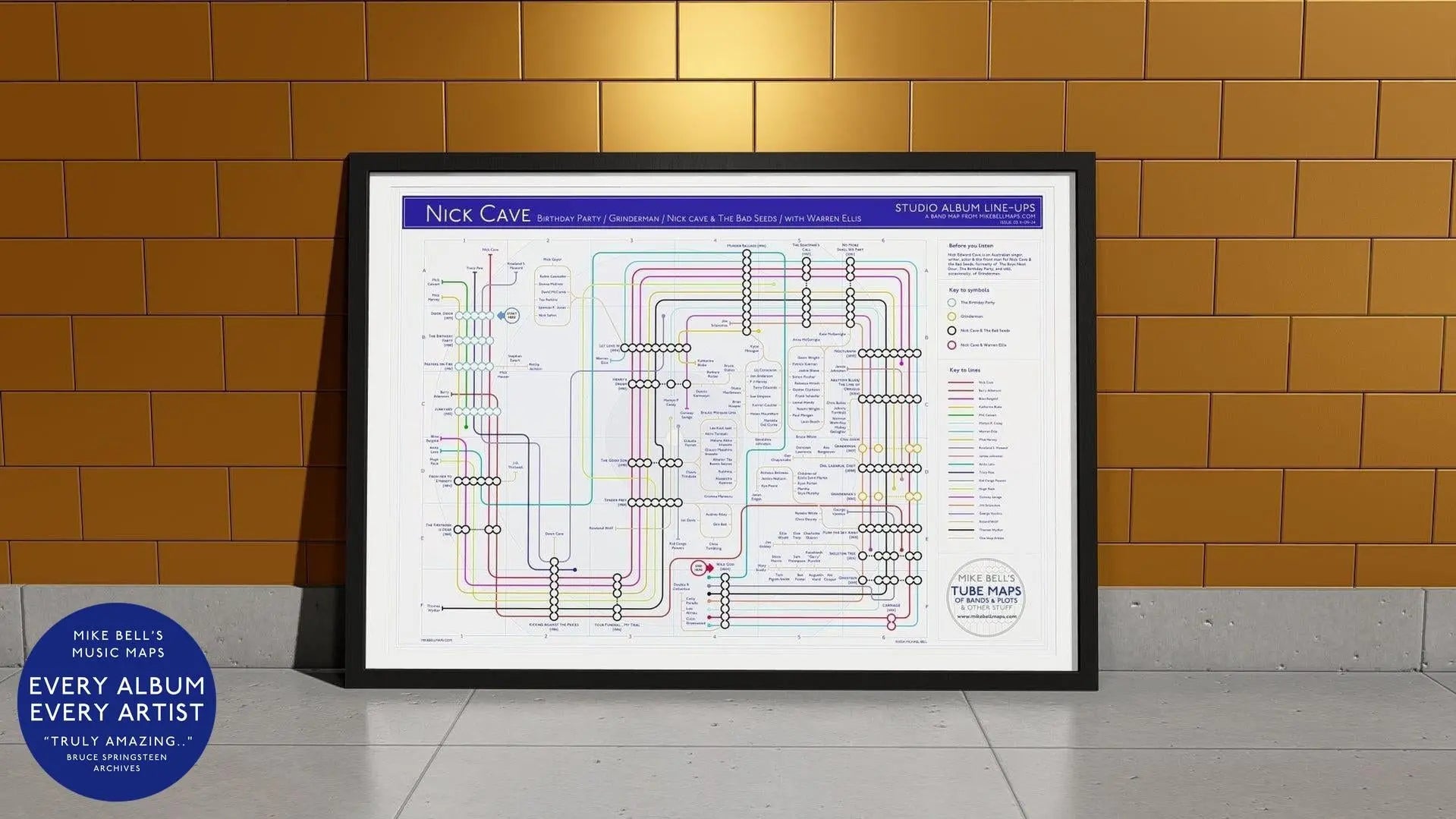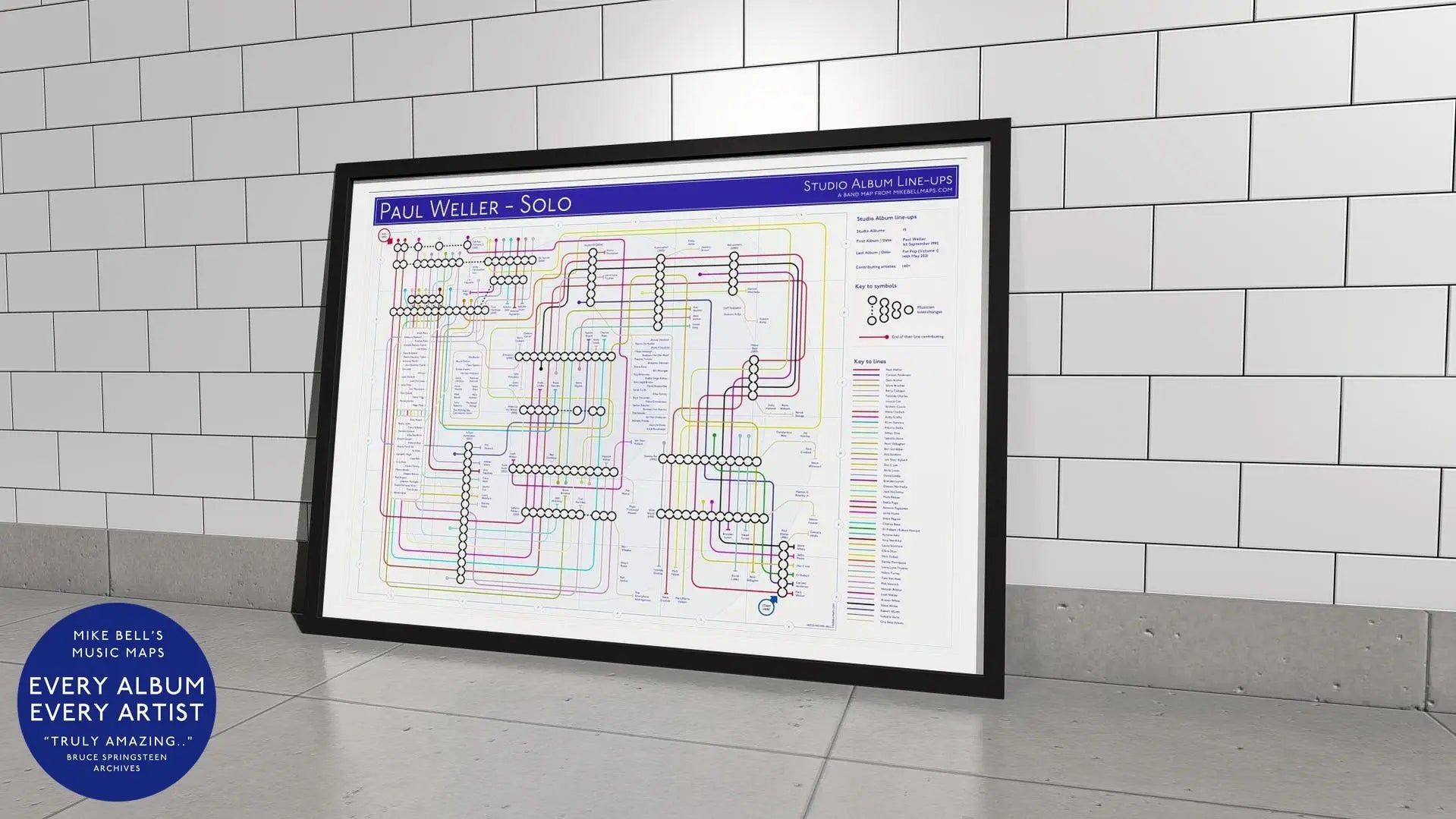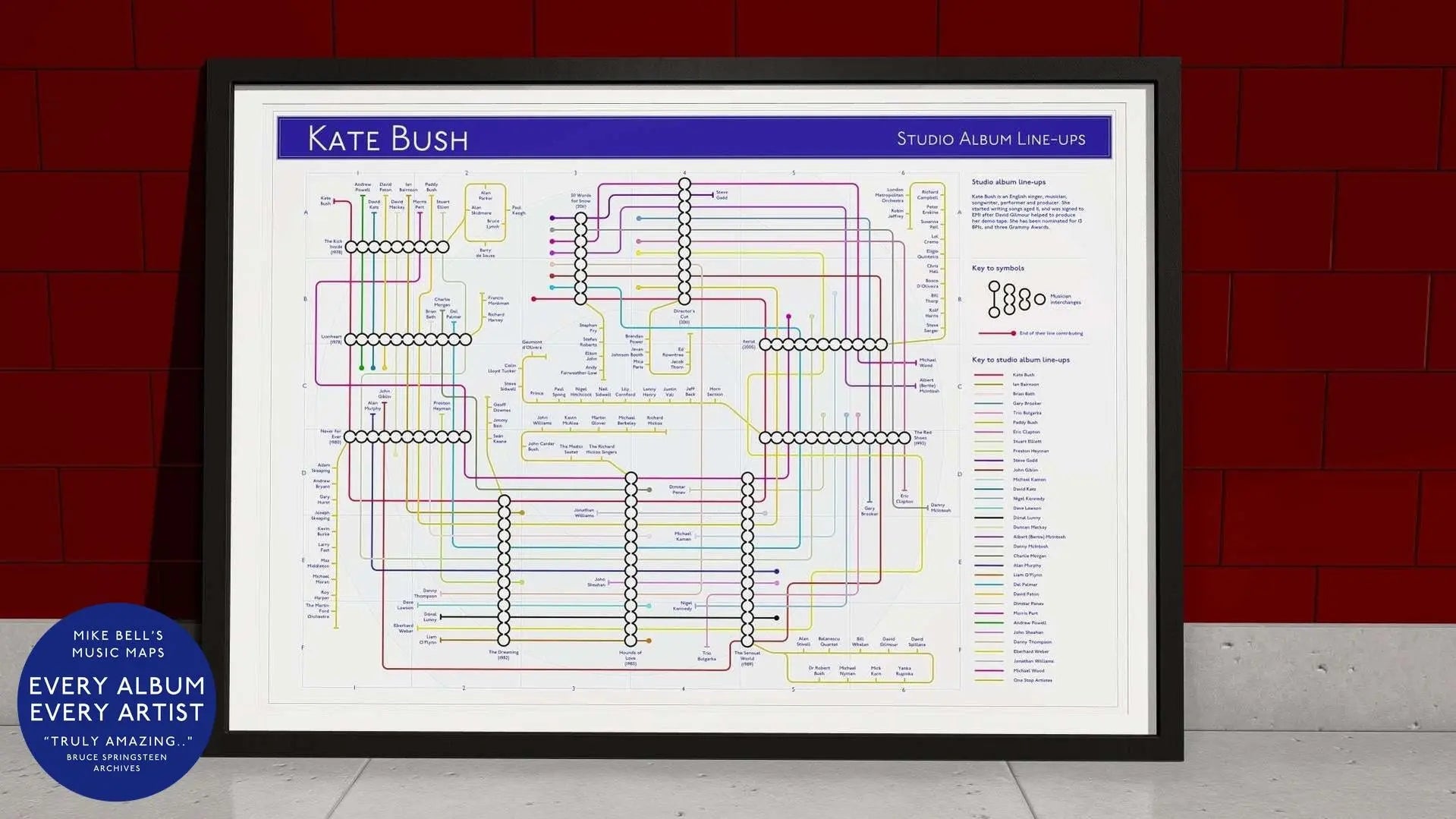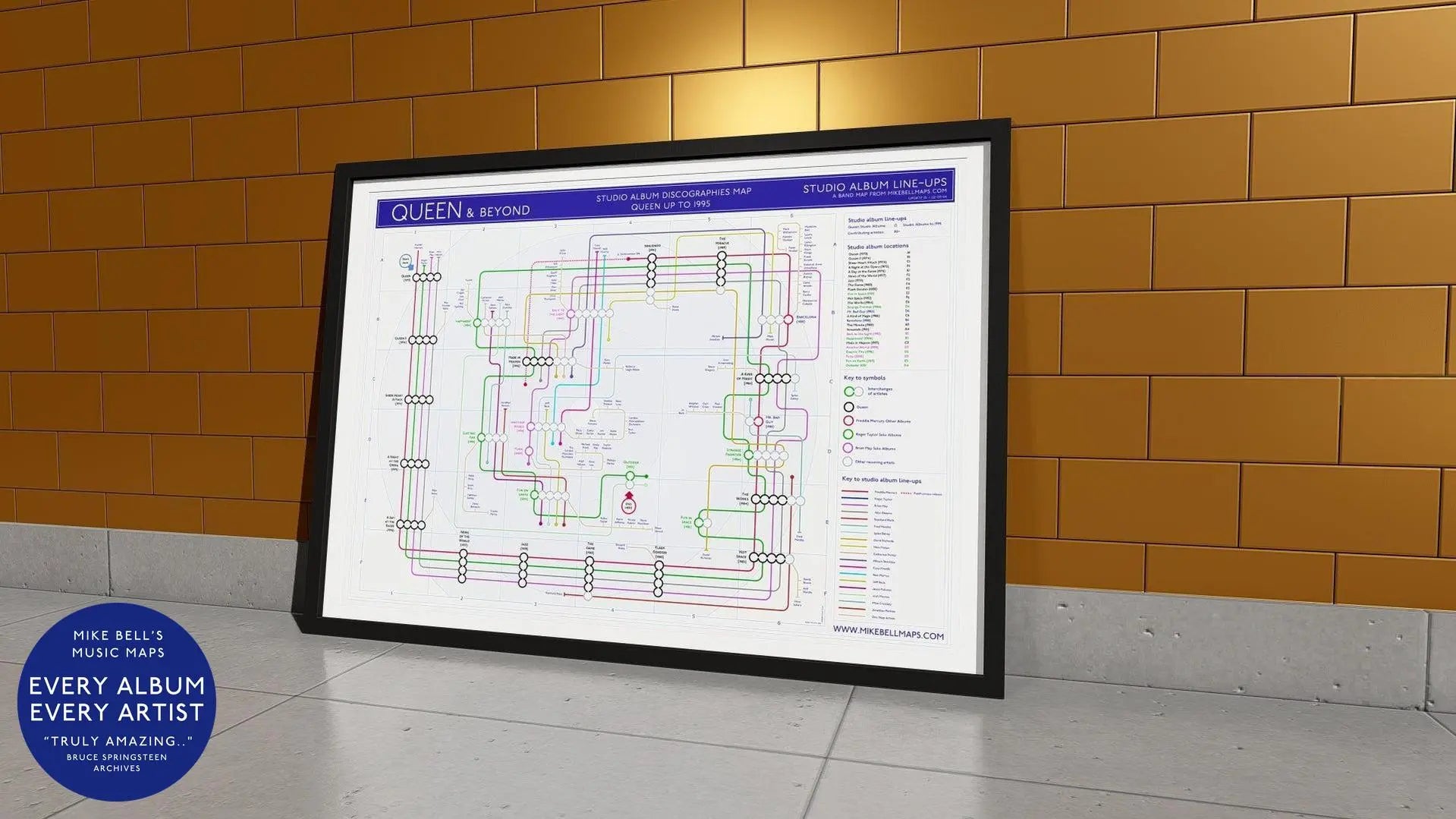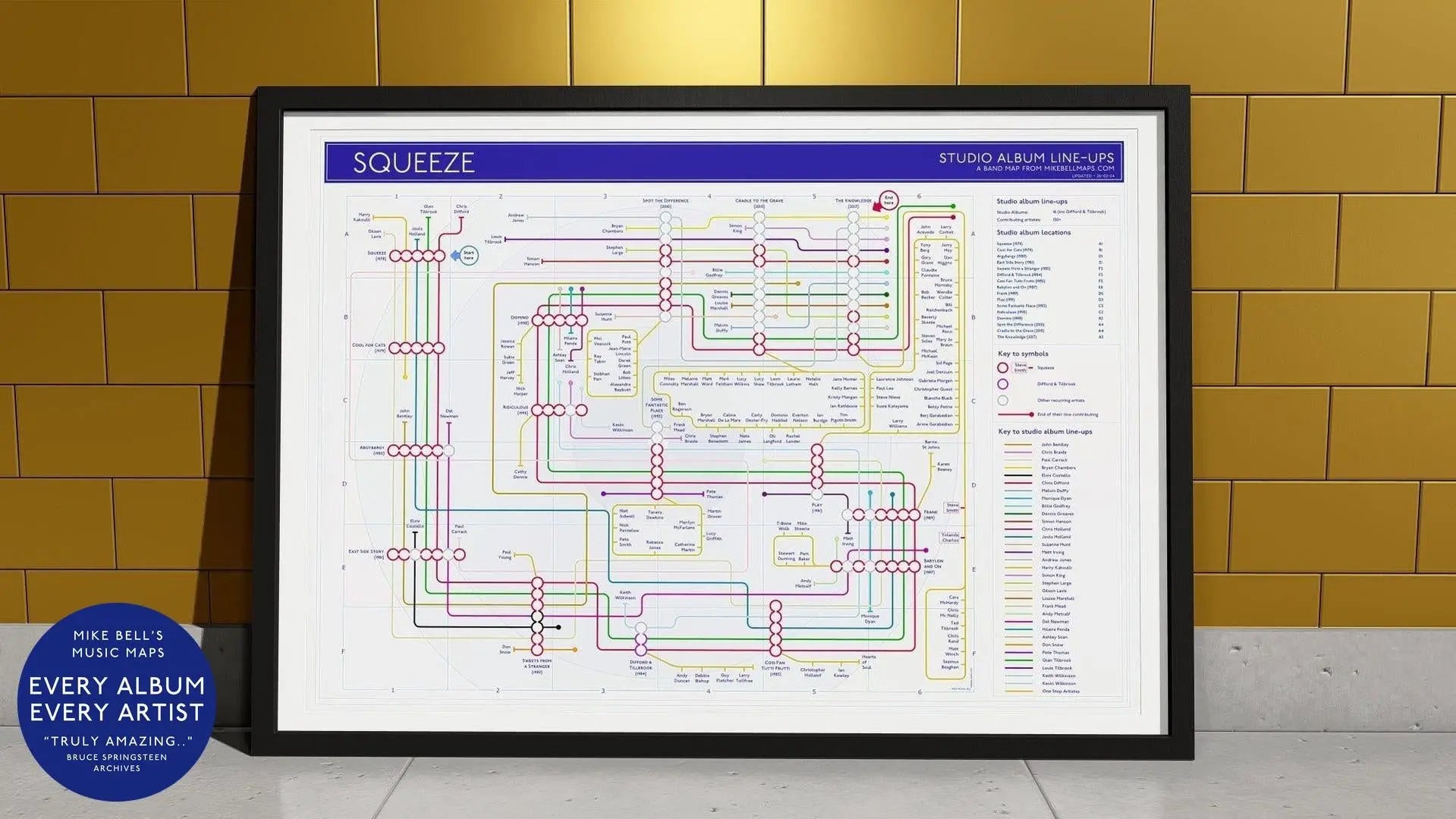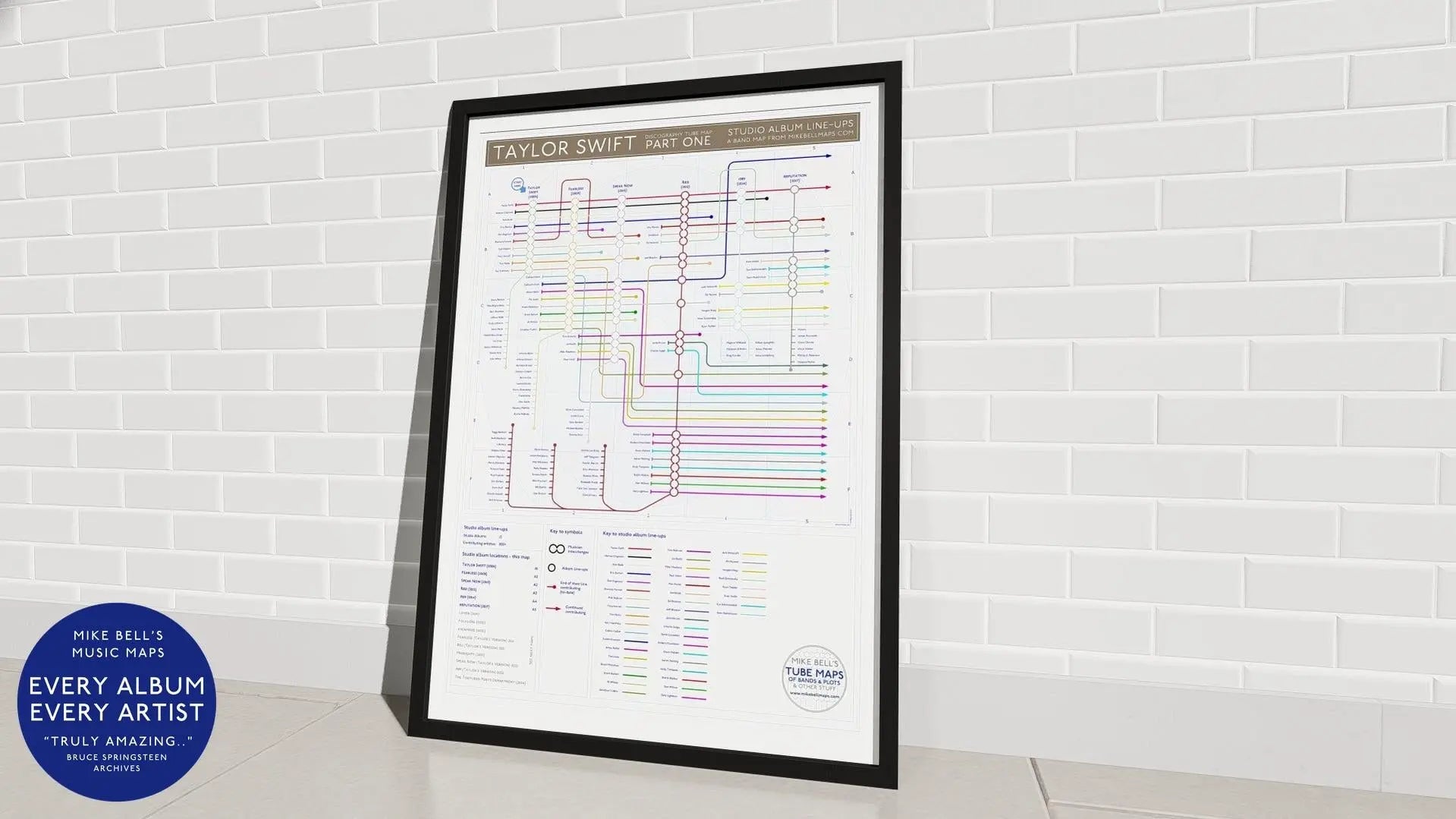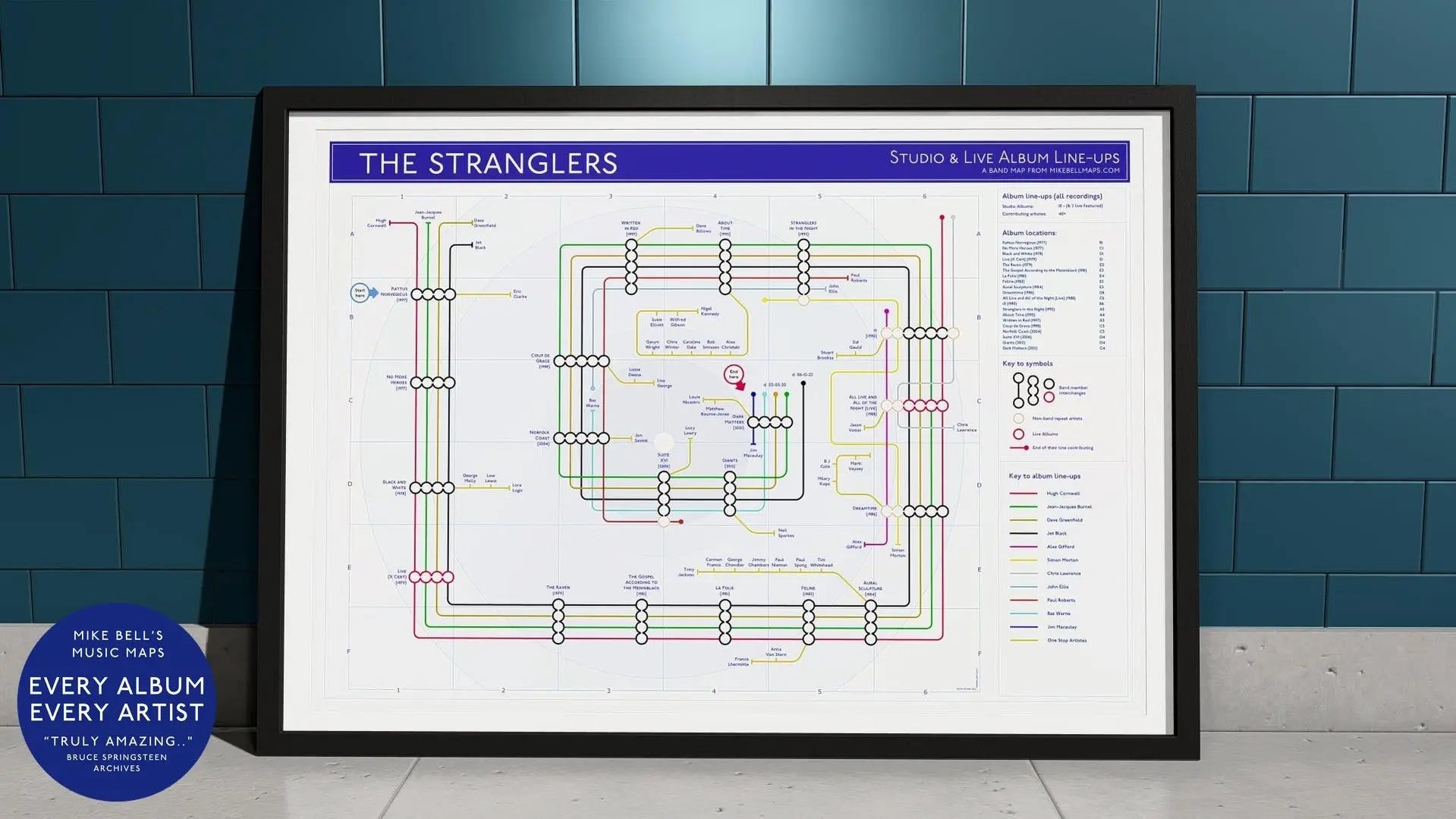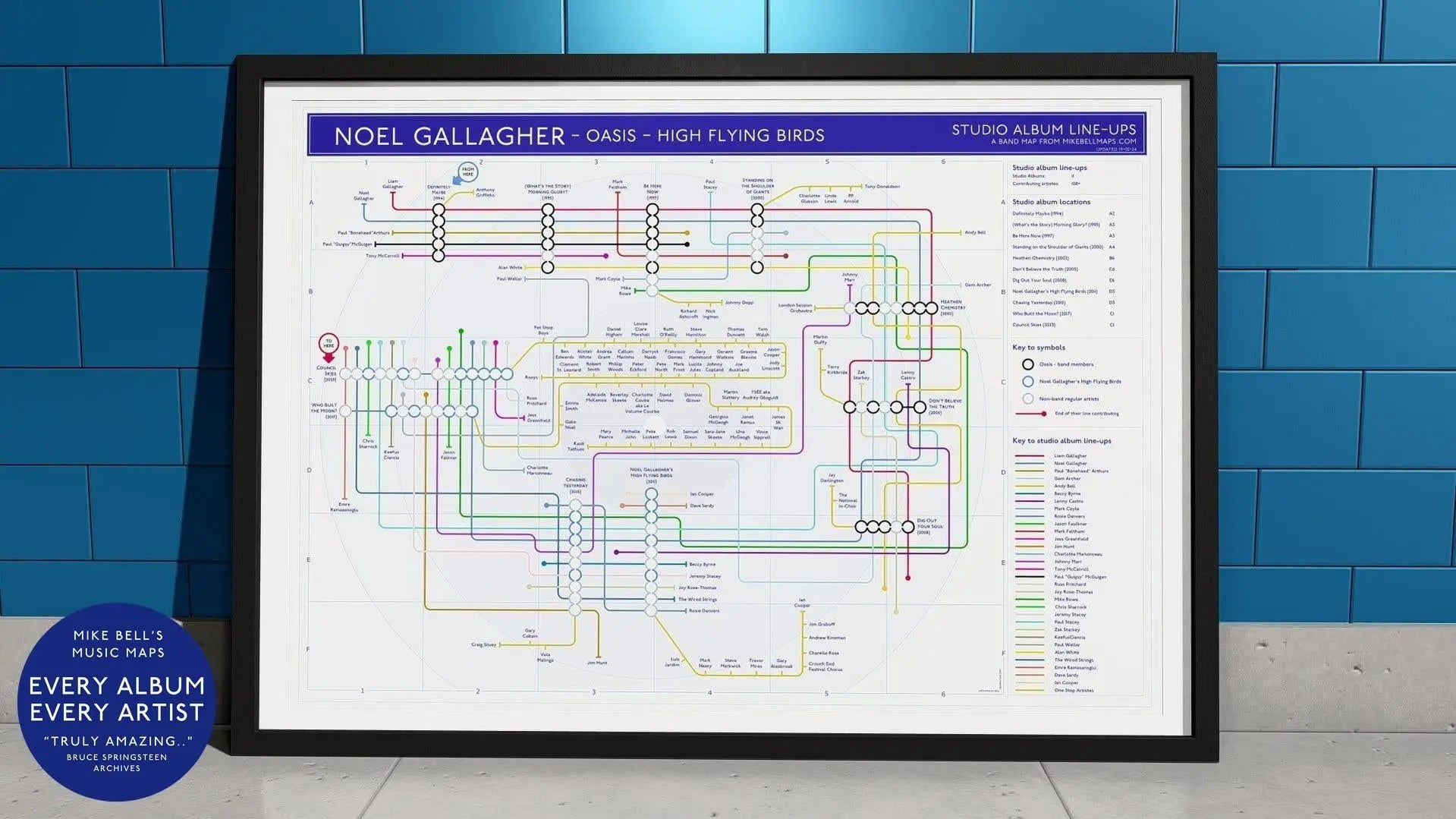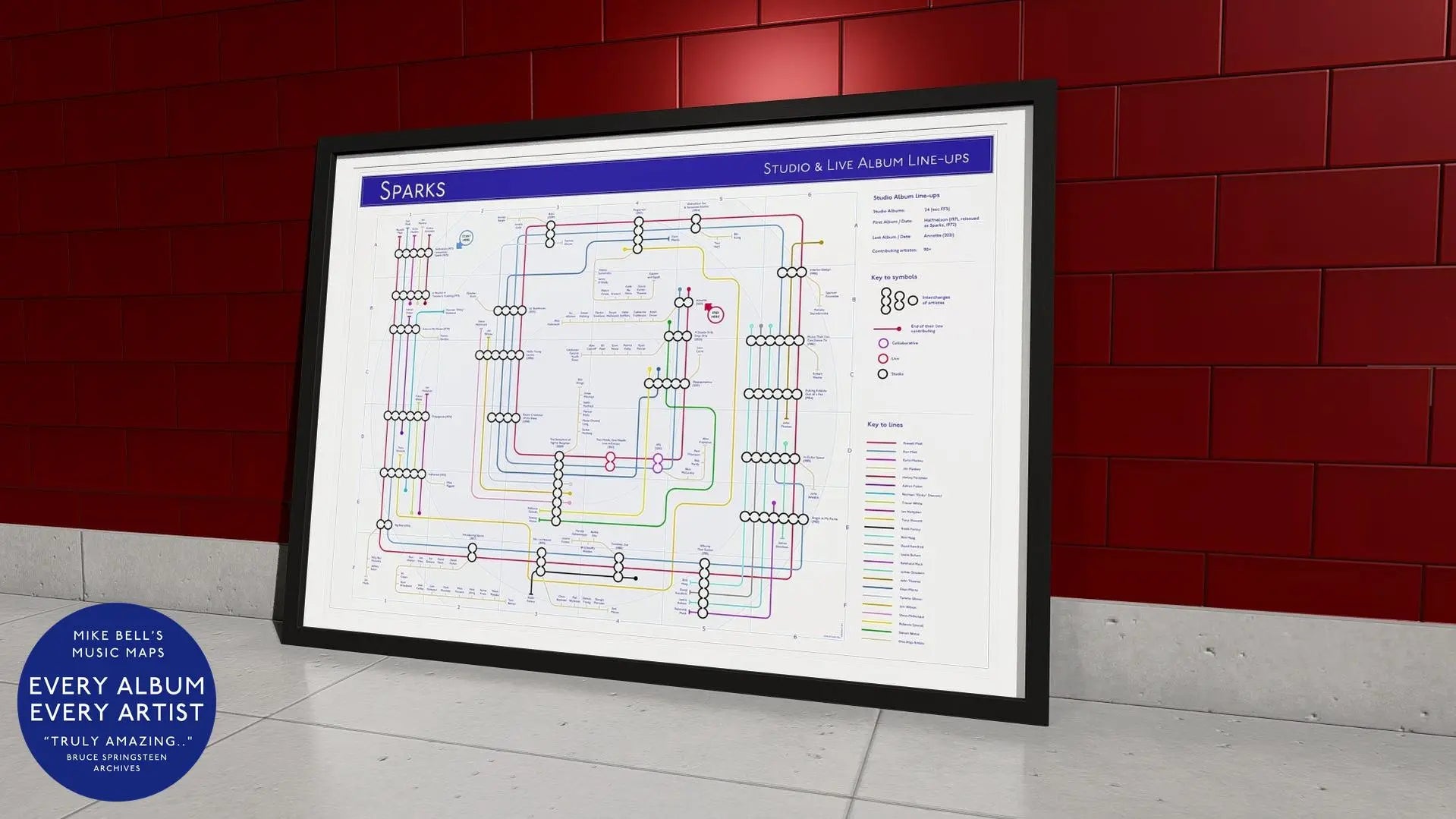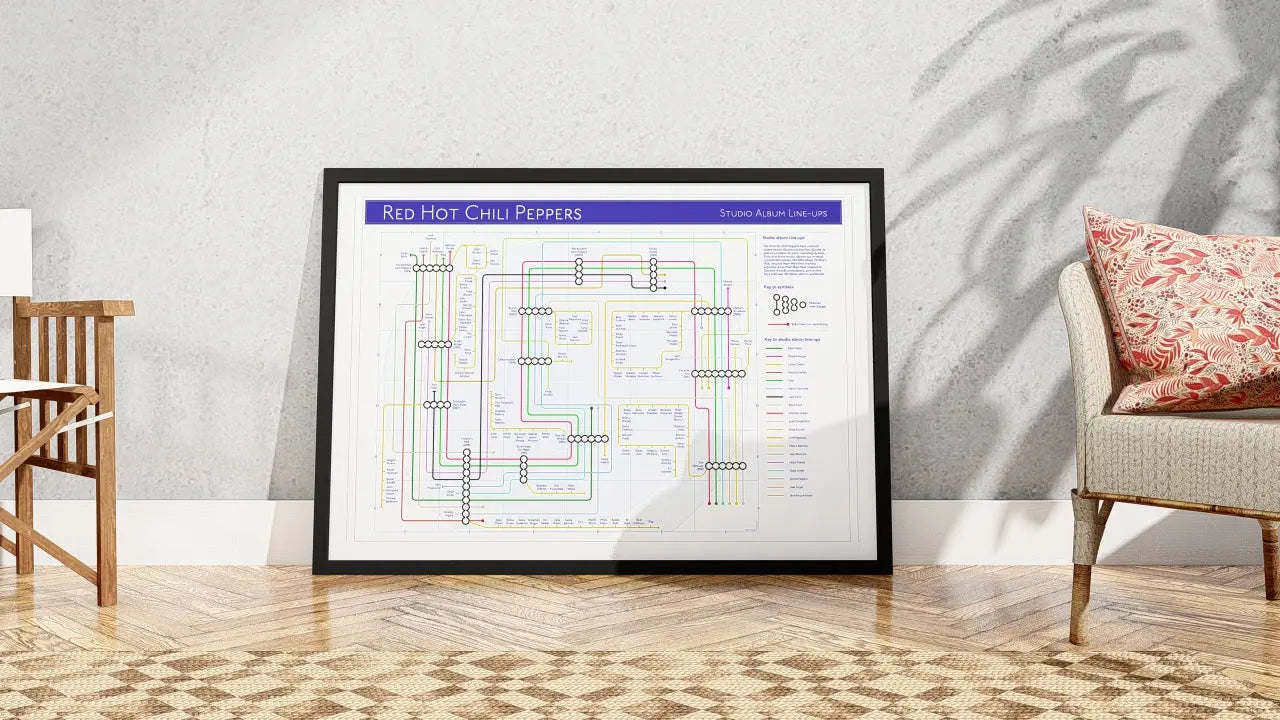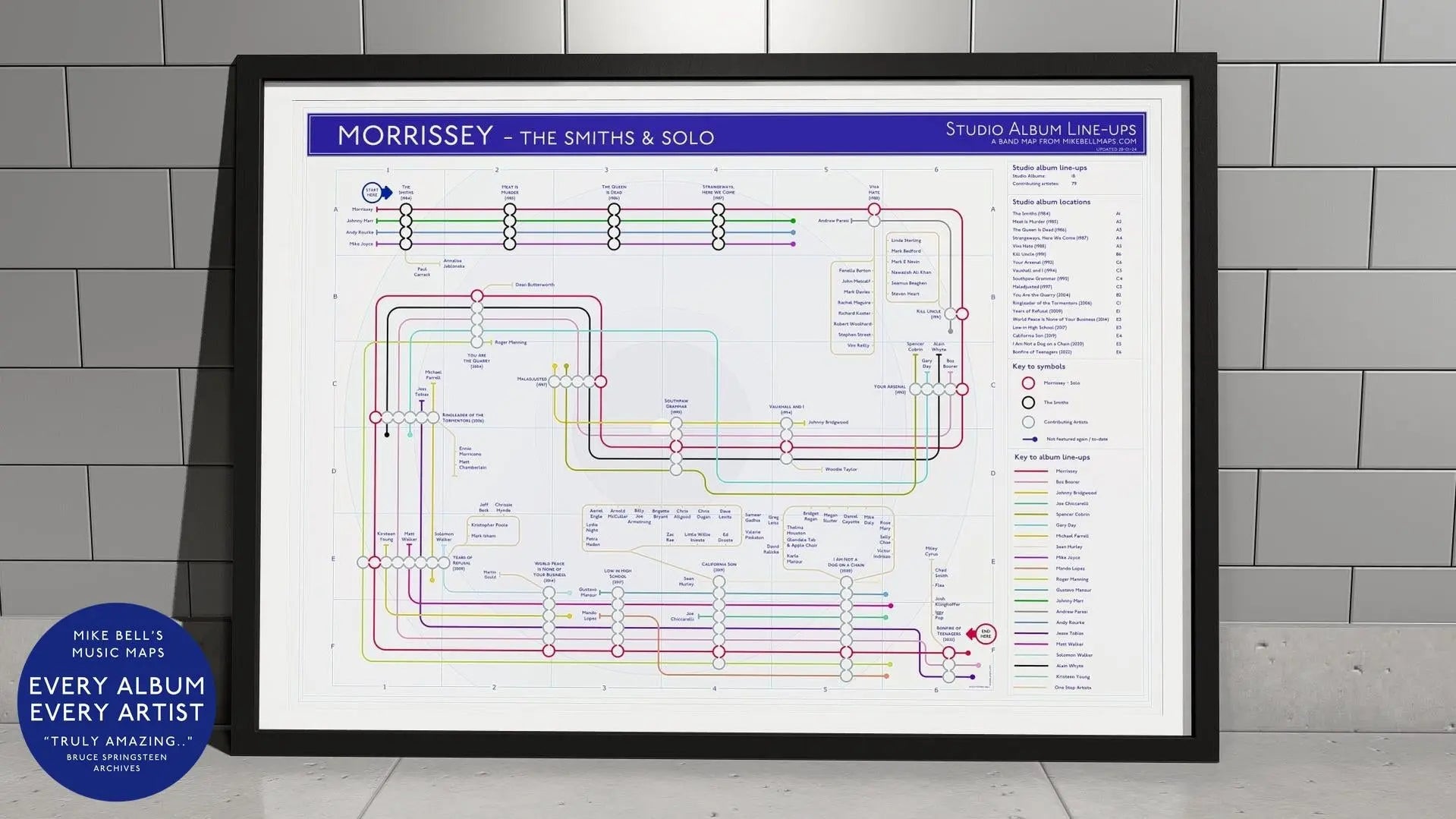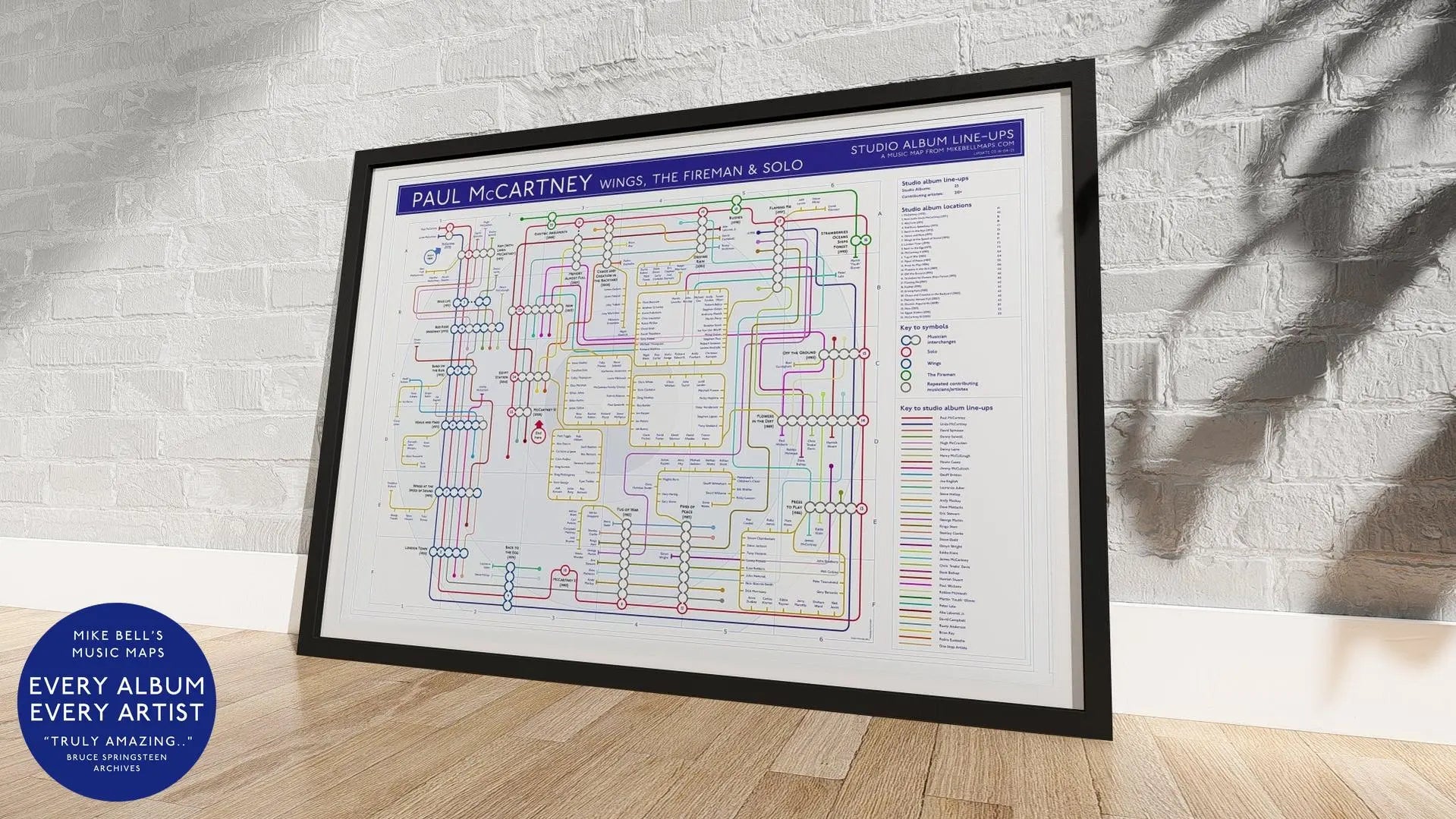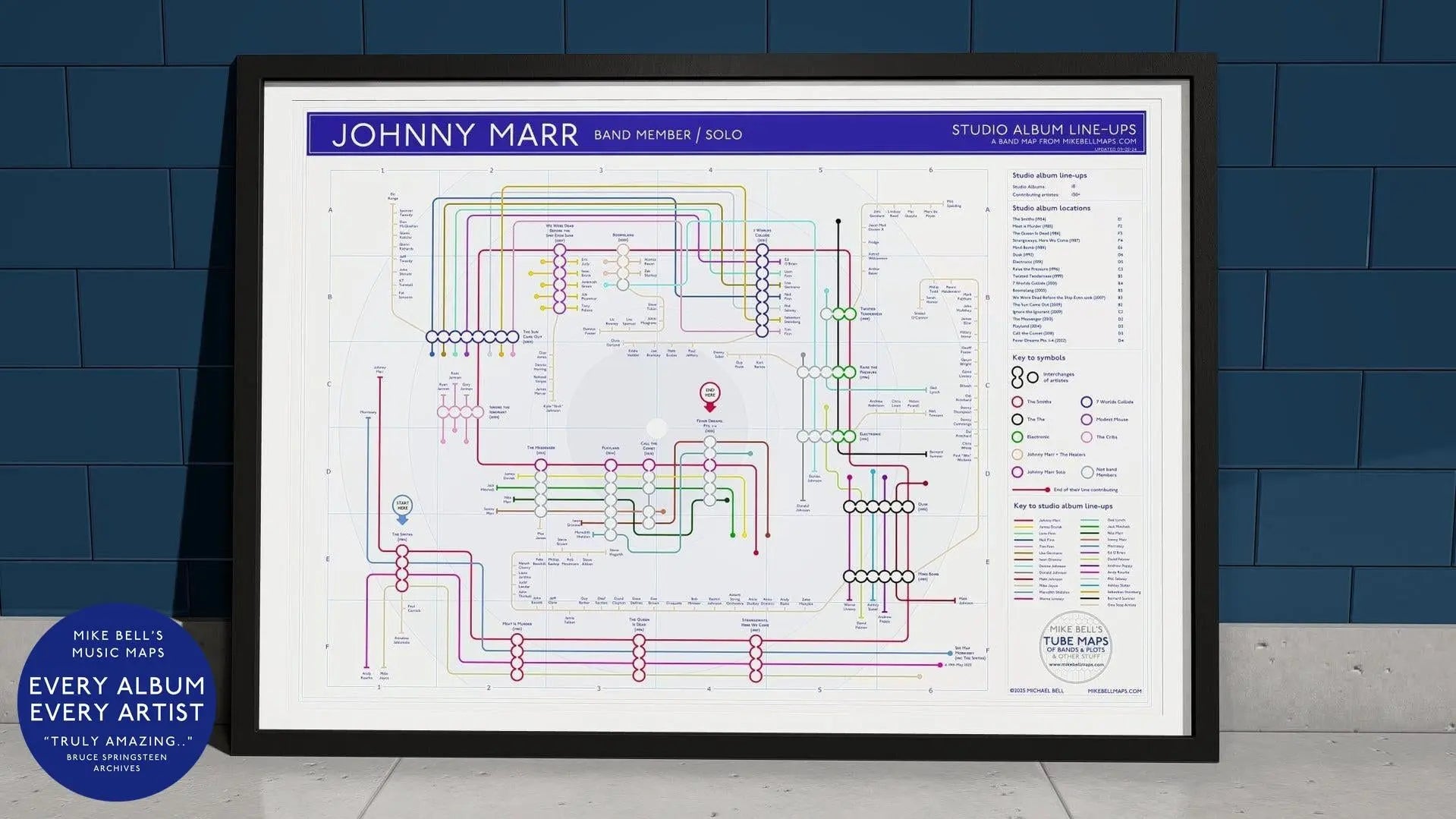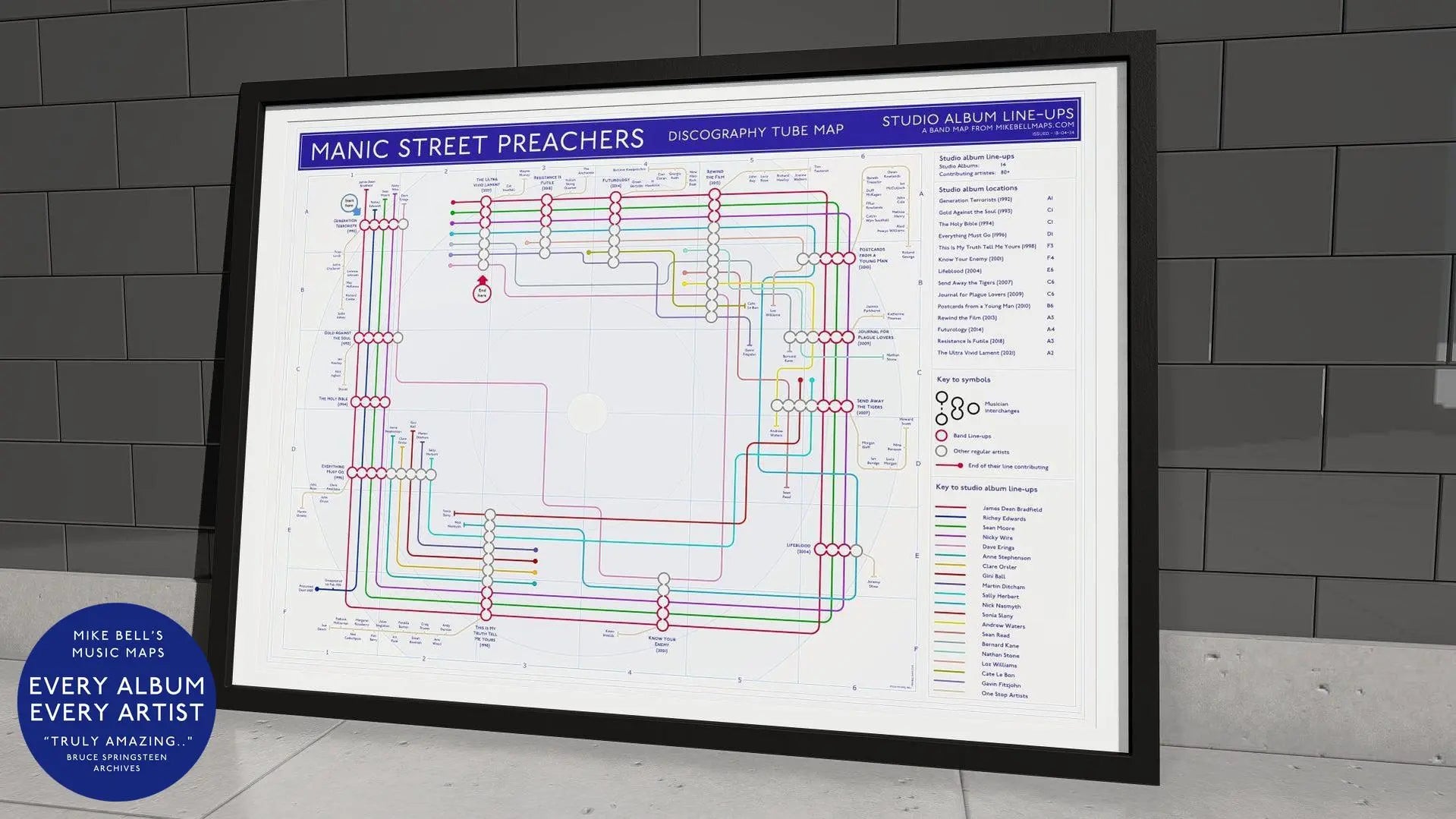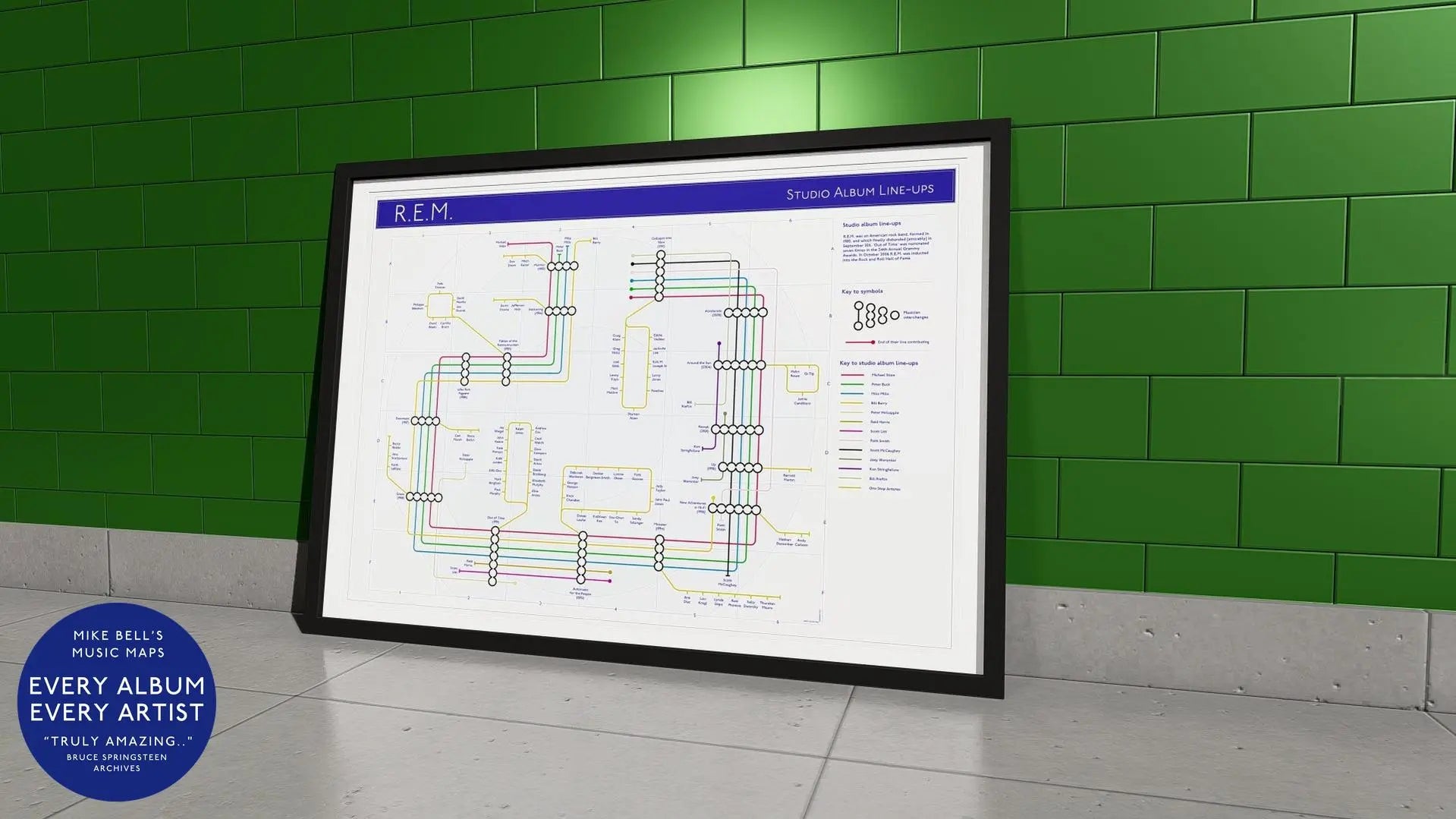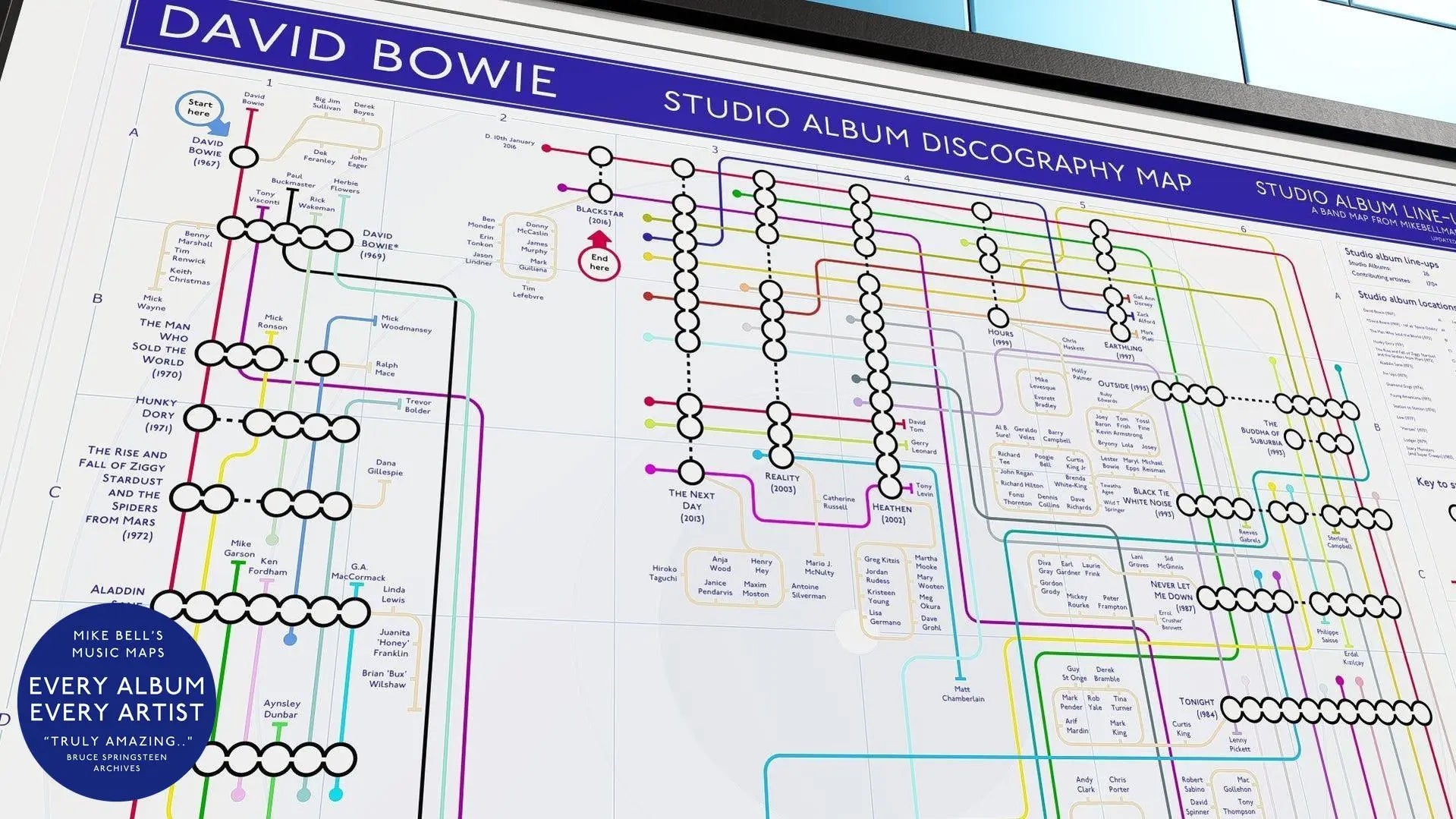
David Bowie Albums – A Studio Discography Story
by Mike Bell
·
In this post, I’ll walk through David Bowie’s albums in order, celebrating the transformations, collaborators, and cultural impact of each one. His music catalog includes some of the most iconic and enduring songs in rock history, solidifying his legacy as a groundbreaking solo artist.
Few artists have shaped modern music and culture like David Bowie. Born David Robert Jones, he later adopted the stage name David Bowie. From glam rock theatrics to Berlin-era experimentation and electronic innovation, Bowie’s albums weren’t just records but full-scale reinventions. Bowie began his musical journey in the mid-1960s, forming early relationships to shape his artistic development.
A significant milestone in his career was the 1989 CD release of his RCA catalogue, which was remastered and made available on CD. This revitalised his catalogue and tied into his promotional tours. His 1997 album Earthling was heavily influenced by techno and drum'n'bass music, showcasing his ability to evolve with current musical trends.
As the creator of the David Bowie Albums Music Map, I’ve visualised every studio release as a “station,” and every contributing musician as an interconnecting line — a tube map of Bowie’s musical journey.

Introduction to David Bowie’s Music
David Bowie was a highly influential and iconic musician, known for his innovative and eclectic style, which spanned multiple genres, including mod rock, glam rock, and experimental electronic rock. Throughout Bowie's career, his music and influence evolved through different periods, marked by key albums and stage personas that shaped his trajectory as an artist.
David Bowie released 26 studio albums, each showcasing his unique ability to experiment with different sounds and personas. Bowie's discography reflects the transformation from early experimentation to the revered masterpieces like ‘Low’ and ‘Heroes.’
From his debut album to his final album, Blackstar, Bowie consistently pushed the boundaries of music, leaving an indelible mark on the industry. With his bold and androgynous style, Bowie became a cultural phenomenon, inspiring countless fans around the world. His music catalogue includes some of the most iconic and enduring songs in rock history, such as “Space Oddity,” “Ziggy Stardust,” and “Let’s Dance.”
Early Career
David Bowie’s early career was a testament to his relentless drive for innovation and reinvention. Born David Robert Jones, he began his musical journey at the tender age of 13, learning the saxophone and performing in local bands. His time at Bromley Technical High School was marked by a pivotal event—a schoolyard fight that left his left pupil permanently dilated, giving him his distinctive look.
After graduating at 16, Bowie worked as a commercial artist while playing saxophone in various mod bands. In 1962, Bowie formed his first band, the Konrads, marking the beginning of his musical identity. In 1966, he released three mod singles on Pye Records, which unfortunately went unnoticed.
During this time, he changed his name to David Bowie to avoid confusion with the Monkees’ Davy Jones, marking the first of many reinventions. Bowie signed with Deram Records in 1967 and released his debut album, “David Bowie,” a music hall-inspired record that showcased his eclectic style.
His artistic pursuits extended beyond music; he spent several weeks in a Scottish Buddhist monastery and studied mime with Lindsay Kemp. In 1969, he formed his own mime company, the Feathers, and later the experimental art group Beckenham Arts Lab, laying the groundwork for his future as a boundary-pushing artist. During his early career, the band mainly released ignored singles, demonstrating his perseverance in music despite early setbacks.
David Bowie's Albums in Chronological Order
Here’s a complete list of David Bowie’s studio albums, from his 1967 debut to 2016’s Blackstar. Most (solo) artists are featured on my Bowie discography map, designed to highlight the music and the key musicians behind it.
- David Bowie (1967)
-
David Bowie / Space Oddity (1969)
His second album, often seen as a polished introduction to the music scene, showcased his ambitious experimentation. -
The Man Who Sold the World (1970)
His bold public statements heightened the anticipation for his forthcoming album, stirring excitement among fans. - Hunky Dory (1971)
- The Rise and Fall of Ziggy Stardust and the Spiders from Mars (1972)
- Aladdin Sane (1973)
- Pin Ups (1973)
- Diamond Dogs (1974)
- Young Americans (1975)
- Station to Station (1976)
- Low (1977)
- Heroes (1977)
- Lodger (1979)
- Scary Monsters (and Super Creeps) (1980)
-
Let’s Dance (1983)
The album sold millions of copies worldwide, becoming one of his most commercially successful records. - Tonight (1984)
- Never Let Me Down (1987)
-
Tin Machine (1989)
The eponymous album by his band Tin Machine was poorly received, marking a period of experimentation in his career. - Tin Machine II (1991)
- Black Tie White Noise (1993)
- The Buddha of Suburbia (1993)
- Outside (1995)
- Earthling (1997)
- Hours (1999)
- Heathen (2002)
- Reality (2003)
- The Next Day (2013)
- Blackstar (2016)
- Toy (Recorded 2001, Released 2021)
During his Berlin era, albums like ‘Low’ and ‘Heroes’ are prime examples of experimental electronic rock recorded, showcasing his collaboration with Brian Eno and marking a pivotal shift in his musical style.
Each record introduced a new voice, a new version of Bowie. Whether it was Ziggy, the Thin White Duke, or the Berlin soundscaper, Bowie constantly redefined what a rock album could be.
Glam Rock Era
The Glam Rock Era was a pivotal period in David Bowie’s career, marked by the release of his iconic album, “The Rise and Fall of Ziggy Stardust and the Spiders from Mars.” This album, released in 1972, was a concept album that told the story of a fictional rock star named Ziggy Stardust, and it catapulted Bowie to international fame.
The album’s title track, “Ziggy Stardust,” became an instant classic, and its blend of glam rock and heavy guitar rock influenced a generation of musicians. During this era, Bowie also released other notable albums, including “Aladdin Sane” and “Pin Ups,” which further solidified his reputation as a bold and innovative artist.
Bowie also collaborated with Mott the Hoople, writing and producing the song 'All the Young Dudes,' which became a significant hit and showcased his influence in the glam rock era.
Bowie’s transition to sleek disco rock with tracks like ‘Fame’ marked a pivotal moment in his career, showcasing a more commercial sound and solidifying his status as a pop culture icon.
The Ziggy Stardust Era
The Ziggy Stardust Era was a defining period in David Bowie’s career, marked by his adoption of the Ziggy Stardust persona. This era saw Bowie release some of his most iconic music, including the “Ziggy Stardust” album and the “Aladdin Sane” album.
The Ziggy Stardust character was a bisexual rock star from outer space, and Bowie’s portrayal of this character both on and off stage was a major factor in his success during this era. The "Station to Station" album inaugurated Bowie's persona shift, marking a significant change in his artistic identity as he explored different musical styles.
Bowie was the only glam rocker to successfully break into the American market with his Ziggy Stardust persona. The Ziggy Stardust Era also saw Bowie embark on a series of highly theatrical and influential live tours, which further cemented his reputation as a master showman.
Berlin Era
The Berlin Era was a period of great creativity and innovation for David Bowie, marked by his collaboration with Brian Eno and Iggy Pop. During this era, Bowie released a series of highly influential albums, including “Low,” “Heroes,” and “Lodger,” which are collectively known as his 'Berlin albums.' These albums represent a transformative period in Bowie's career, showcasing his ability to experiment with new sounds and styles, and marking a departure from mainstream pop to a more avant-garde sound.
Bowie also contributed significantly to Iggy Pop’s albums during their time in Berlin, producing and providing instrumental support. The Berlin Era was also marked by Bowie’s interest in German electronic music, which had a significant influence on his work during this period. Albums such as “Low” and “Heroes” are now considered some of the greatest albums of all time, and their influence can still be heard in music today.
Bowie’s collaboration with John Lennon on the track “Fame” from the album “Young Americans” was a pivotal moment in his career.
Mapping Bowie’s Collaborators
David Bowie never worked alone. His albums featured legendary musicians like Mick Ronson, Carlos Alomar, Brian Eno, Nile Rodgers, and Reeves Gabrels — just to name a few. Bowie’s extensive contributions to Iggy Pop’s musical career, including producing Iggy Pop's albums 'The Idiot' and 'Lust for Life' during their Berlin era, were significant. Bowie reunited with producer Nile Rodgers during the recording of ‘Black Tie White Noise’ and with Brian Eno for the album ‘1. Outside,’ revitalising his sound. In my Bowie music map, these artists become interwoven tube lines, tracing their paths across multiple records.
The featured material recorded during Bowie’s 1974 tour, particularly the live album ‘David Live,’ marked a pivotal moment in his artistic evolution, showcasing his musical experimentation and transformation.
This creates an intuitive visual story of Bowie’s creativity — a system of intersecting talents and transformative eras.
Soul and Funk Influences
David Bowie’s soul and funk influences came to the forefront with his 1974 album “Diamond Dogs.” This album was a fusion of two distinct concepts: a musical set in a dystopian future and an adaptation of George Orwell’s Nineteen Eighty-Four. The result was a stylish dance rock album that climbed to number one in the UK, featuring hits like “Rebel Rebel” and the title track “Diamond Dogs.”
Bowie’s fascination with soul music reached new heights with his 1975 album “Young Americans.” This record marked a radical departure from his previous work, embracing a sound that Bowie himself described as “plastic soul.” Collaborating with the Philly soul band MFSB, Bowie crafted a sleek, danceable album that was both experimental and accessible. The title track “Young Americans” became a major crossover hit, showcasing Bowie’s ability to reinvent himself and appeal to a broader audience.
Experimental Period
David Bowie’s experimental period began in the late 1970s, heralded by the release of his groundbreaking album “Low” in 1977. This album marked a significant departure from his previous work, diving headfirst into the realms of electronic and ambient sounds. Collaborating with the innovative Brian Eno, Bowie crafted an album that was both avant-garde and deeply influential. The result was a critical and commercial success, with “Low” often cited as one of the greatest albums of all time.
The experimental journey continued with the release of “Heroes” later that same year. This album blended rock and electronic sounds, creating a unique and powerful sonic landscape. The title track, “‘Heroes’,” became one of Bowie’s most famous songs, its anthemic quality and iconic music video cementing its place in rock history. The song’s enduring appeal is a testament to Bowie’s ability to capture the zeitgeist while pushing musical boundaries.
In 1979, Bowie released “Lodger,” an album that ventured even further into avant-garde territory. While it didn’t achieve the same commercial success as some of his other works, “Lodger” has since been recognized as a groundbreaking and influential album. This period of experimentation was not just about pushing musical boundaries; it was also a time of prolific collaboration. Bowie worked closely with Iggy Pop, producing and co-writing songs for Iggy’s albums, and even contributing to film soundtracks and other projects.
Bowie’s experimental period was a key factor in his enduring success and influence. It paved the way for future musical explorations and solidified his reputation as a fearless innovator. This era of his career demonstrated that Bowie was not content to rest on his laurels; he was always looking for new ways to challenge himself and his audience.
Electronic and Collaborative Period
The Electronic and Collaborative Period was a time of great experimentation and innovation for David Bowie, marked by his collaboration with a wide range of artists and his exploration of new sounds and styles. During this era, Bowie released albums such as “Outside” and “Earthling,” which showcased his ability to blend electronic music with rock and pop. He also collaborated with artists such as Brian Eno, Iggy Pop, and Tin Machine, and released a series of highly influential live albums, including “LiveAndWell.com” and “A Reality Tour.” This period also saw Bowie release his own guitar rock combo, Tin Machine, and reunite with Brian Eno for the experimental electronic rock album, “1. Outside.” ‘The Man Who Sold the World’ was a heavy guitar rock album that marked a departure from Bowie’s earlier styles.
During the 1990s, Bowie embarked on a co-headlining tour with Nine Inch Nails, a strategic move to attract a younger audience, although it ultimately did not achieve the desired success.
Each new album during this period represented different phases of Bowie’s career and thematic explorations.
New Wave and Pop Era
David Bowie’s new wave and pop era was a period of both commercial success and artistic innovation. The 1980 album “Scary Monsters” was a critical and commercial triumph, featuring the number one single “Ashes to Ashes.” This album revisited the character of Major Tom from “Space Oddity” and showcased the textural guitar-synthesiser work of Chuck Hammer, blending experimental electronic rock with stylish glam rock.
In 1983, Bowie released “Let’s Dance,” a sleek, funky album produced by Nile Rodgers. The title track became a global hit, reaching number one in both the UK and the US, and its innovative music videos for “Let’s Dance” and “China Girl” further cemented Bowie’s status as a pop icon. Following the release of "Let's Dance," Bowie embarked on a sold out arena tour, characterized by a series of sold-out performances across major venues, showcasing his newfound status as a popular rock star. This era was characterized by Bowie’s ability to create catchy, accessible music that still pushed the boundaries of pop and rock.
Bowie continued to explore new sounds with albums like “Tonight” and “Never Let Me Down,” collaborating with artists such as Iggy Pop and Tina Turner. His interest in German electronic music and his ongoing collaboration with Brian Eno resulted in a unique blend of experimental electronic rock and stylish glam rock, solidifying his reputation as a musical chameleon.
Own the Map – A Tribute in Print
If you’re a fan of Bowie or love music history told in new ways, the David Bowie Albums Music Map is the perfect collectible. The map visualizes David Bowie’s albums, showcasing the evolution of his music over the years. Bowie often stirred interest in his forthcoming album projects by revealing aspects of his identity, which contributed to the anticipation surrounding his music releases. It even includes the ‘fourth retrospective box’ titled ‘Loving the Alien,’ which covers Bowie’s works from 1983 to 1988, as part of its comprehensive coverage.
Printed on premium stock with full attention to detail, it’s a striking centrepiece for any Bowie enthusiast’s collection. Each print features iconic album art, such as that of ‘Aladdin Sane,’ which has shaped public perception and set expectations for his music.
Final Thoughts
David Bowie’s legacy and impact on music and popular culture are nothing short of monumental. Widely regarded as one of the most influential and innovative musicians of all time, Bowie’s ability to reinvent himself and experiment with new sounds and styles has left an indelible mark on countless artists across various genres. From glam rock to punk to electronic music, Bowie’s influence is pervasive and profound.
Songs like “Space Oddity” and “Changes” have become anthems for generations, capturing the spirit of their times while remaining timeless. Bowie’s willingness to challenge social norms and conventions, coupled with his bold and androgynous style, has inspired countless fans and artists alike. His influence can be heard in the music of Iggy Pop, Lou Reed, Lady Gaga, and many others, each of whom has cited Bowie as a key inspiration.
Bowie’s contributions to music have been recognized with numerous awards and accolades, including multiple Grammy Awards and a place in the Rock and Roll Hall of Fame. His impact extends beyond his music; his innovative approach to fashion, performance, and identity has left a lasting legacy in popular culture. Bowie’s albums continue to be widely listened to and enjoyed, a testament to their enduring appeal and significance.
Even after his passing in 2016, Bowie’s music and legacy continue to inspire new generations of musicians and fans. His ability to constantly evolve and push the boundaries of what music could be ensures that his impact will be felt for years to come. David Bowie’s albums are not just a part of music history; they are a vital and important part of our shared cultural heritage.








